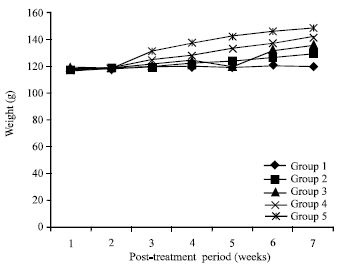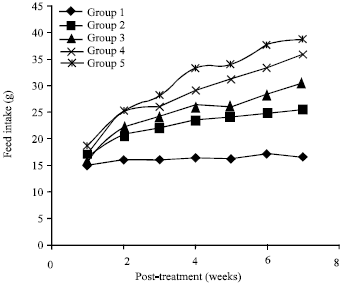Research Article
Sub-chronic Study of Aqueous Stem Bark Extract of Senna siamea in Rats
Department of Biochemistry, Ahmadu Bello University, Zaria, Nigeria
S.B. Mada
Department of Biochemistry, Ahmadu Bello University, Zaria, Nigeria
H.M. Yakasai
Department of Biochemistry, Bayero University, Kano, Nigeria














